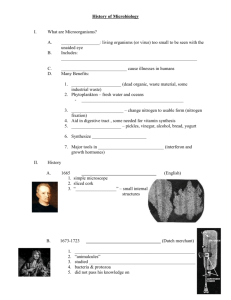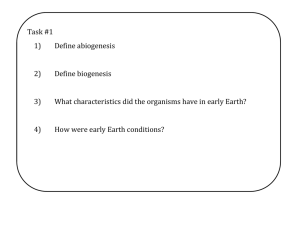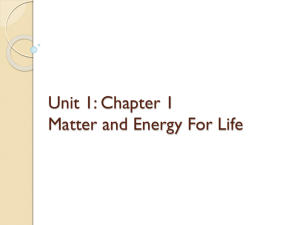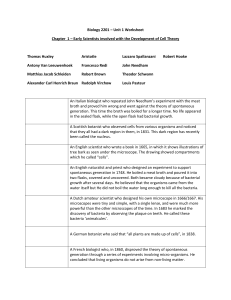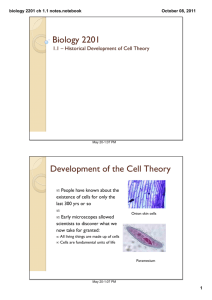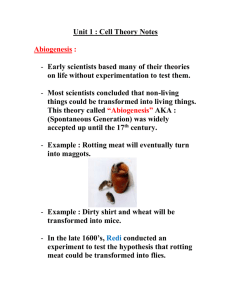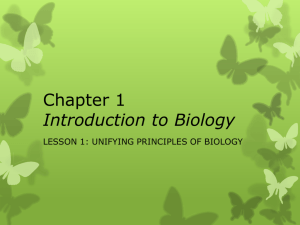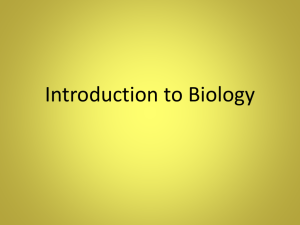File
advertisement
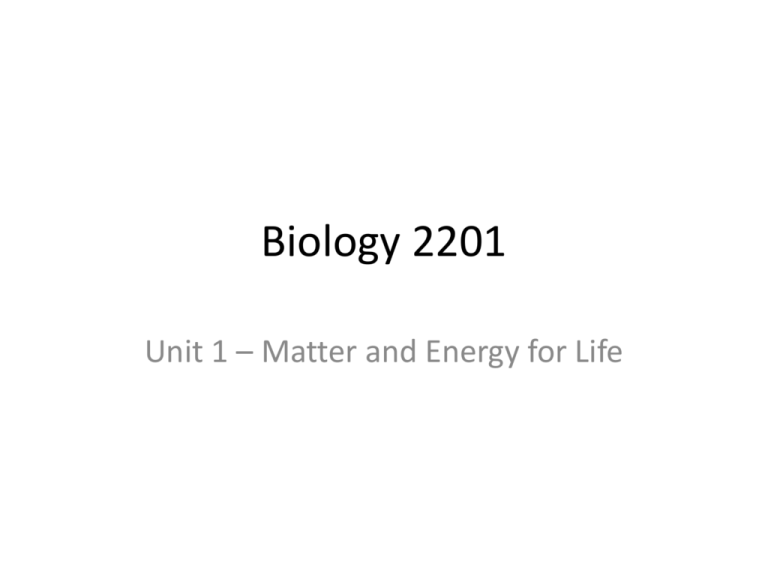
Biology 2201 Unit 1 – Matter and Energy for Life Abiogenesis vs. Biogenesis Abiogenesis is the believe that living things can come from non-living things…..WRONG – “Spontaneous Generation” – Thomas Huxley renamed it to “abiogenesis” Biogenesis is the belief that Living things come from other living things…..CORRECT SCIENTISTS THAT PLAYED A PART IN THE DEBATE Over the years there have always been back and forth debates: Aristotle observes and formulates ideas about nature. Aristotle supported spontaneous generation Francesco Redi • Conducted one of the first controlled experiments that supported biogenesis. He used meat in jars, half covered with mesh and half open. After several days he found that the mesh-covered meat had no maggots, while the open jar had maggots. Redi’s Experiment John Needham Support for Abiogenesis - John Needham designed an experiment that incorrectly supported abiogenesis. He boiled a meat broth for a short period of time, and poured it into two flasks, covered and uncovered. Both became cloudy because of bacterial growth after several days. He believed that the organisms came from the water itself. He did not boil the water long enough to kill all the bacteria. Lazzaro Spallanzani • Support for Biogenesis - Lazzaro Spallanzani didn’t agree with Needham, and so repeated Needham’s experiment. This time the broth was boiled for a longer time. No life appeared in the sealed flask, while the open flask had bacterial growth. Boiling the broth “killed the vital principle” that made life arise from nonliving matter like water. Louis Pasteur • Support for biogeneisis - conducted experiments that disproved abiogenesis, concluding that organisms do NOT arise from non-living matter. • Goose-neck flask experiment is the guiding principle behind pasteurization Tools that allow us to see cells…Microscopes Two Scientists helped in the discovery of cells: • Robert Hooke writes a book, in which it shows illustrations of tree bark as seen under the microscope. The drawing showed compartments he called “cells” • Antony van Leeuwenhoek (Awesome microscopes) designed his own microscope with a tiny simple lens. He reported that he seen tiny “animalcules” or tiny organisms that moved. This marked the discovery of bacteria, the simplest of all living organisms. Leeuwenhoek developed microscopes that had the clearest quality image at the time. The Cell Theory • People have known about the existence of cells for only the last 300 yrs or so • Early microscopes allowed scientists to discover what we now take for granted: – All living things are made up of cells – Cells are fundamental units of life **The Cell Theory States That… • All living organisms are made up of one or more cells • Cells are the basic unit of structure and function in all organisms • All cells are derived from pre-existing cells (This means that ALL cells had to come from other cells) • In a multicellular organism (like a plant or a human) the activity of the entire organism depends on the total activity of individual cells that make up the organism Scientists that added to the Cell Theory • Robert Brown observed cells from various organisms and noticed that they all had a dark region in them. This dark region has recently been called the nucleus. • Matthias Jacob Schleiden, a botanist, said that “all plants are made up of cells” • Theodor Schwann wrote that “all animals are made up of cells” and then added that “cells are organisms, and animals and plants are collectives of these organisms” • Alexander Carl Henrich Braun said “cells are the basic unit of life” • Jugo von Mohl said that “protoplasm is the living substance of the cell” then added that “cells are made up of protoplasm enveloped by a flexible membrane” • Rudolph Virchow wrote that “cells are the last link in a great chain [that forms] tissues, organs, systems and individuals… where cells exist there must have been pre-existing cells…”
